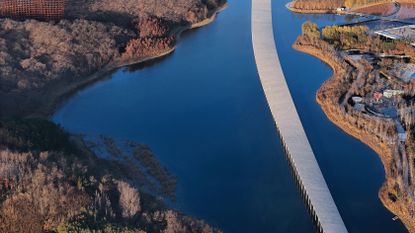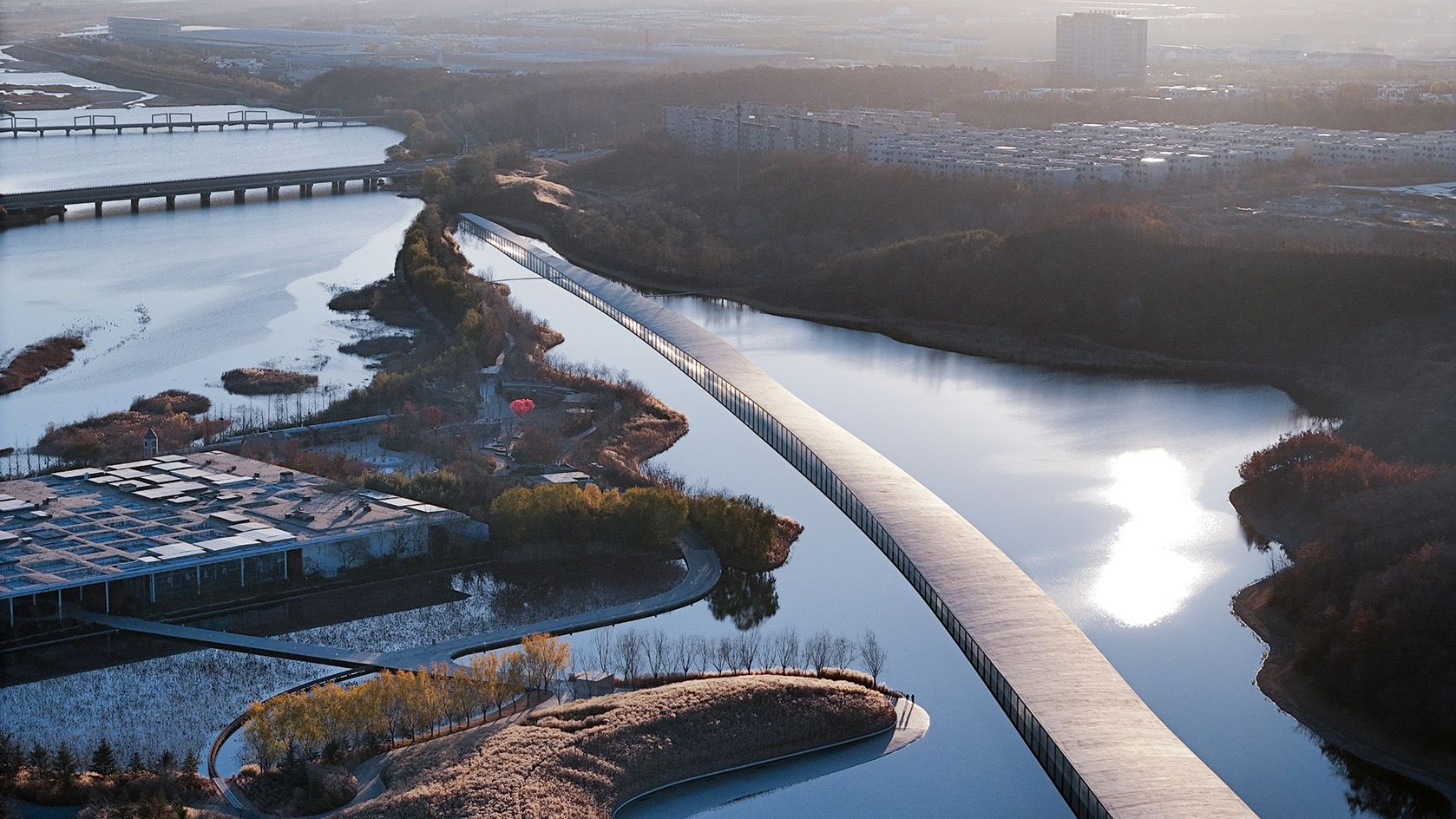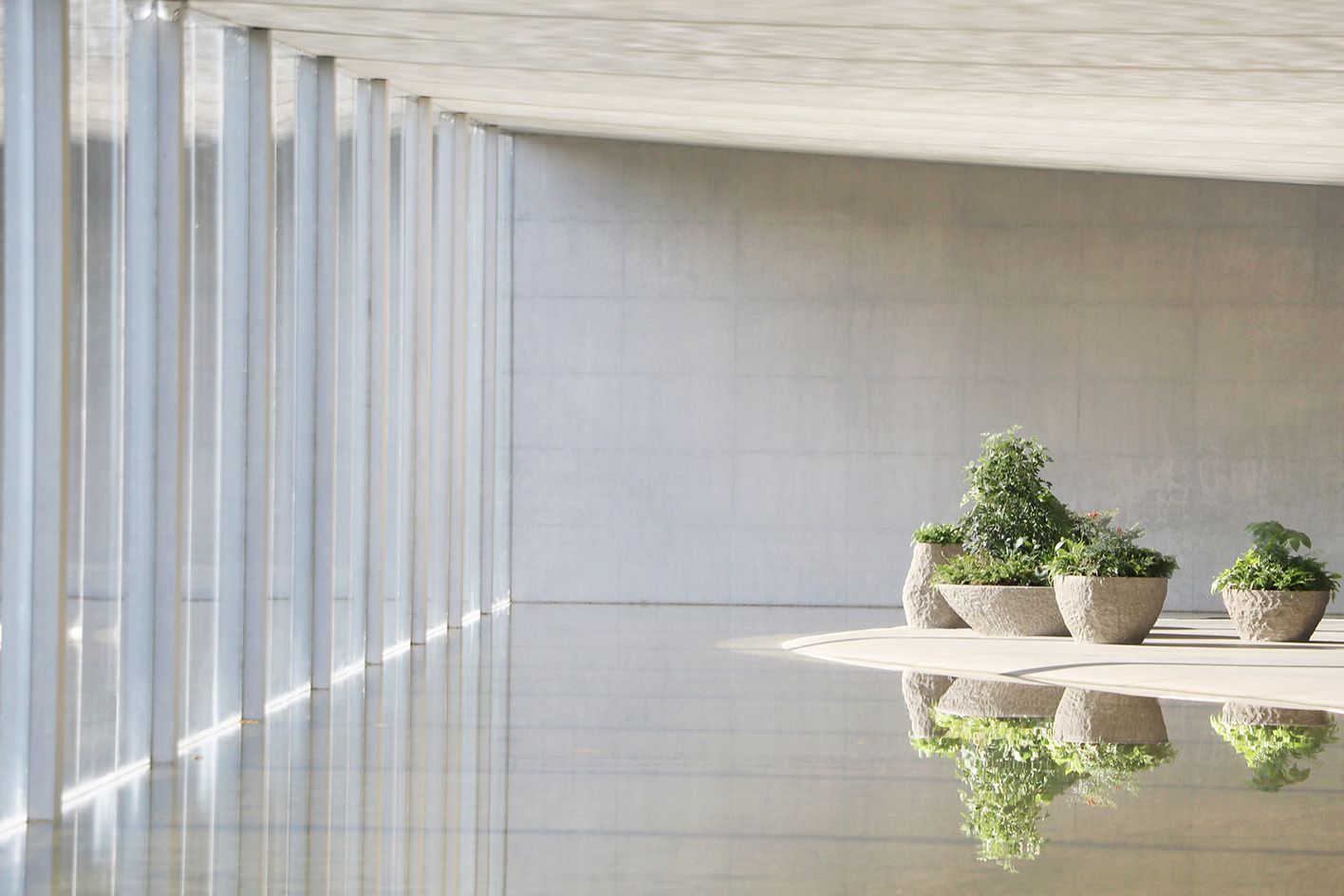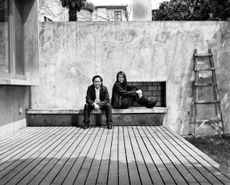Junya Ishigami’s Zaishui Art Museum in China was conceived as a ‘gentle giant’
Japanese architect Junya Ishigami completes Zaishui Art Museum, a kilometre-long building positioned in a manmade lake and aiming to ‘bring the outside landscape in’

The Zaishui Art Museum, a newly opened multipurpose building by Japanese architect Junya Ishigami, comprises a striking, kilometre-long structure emerging from the water in north-east China. The project, housing an exhibition area, visitor centre and retail space, aims to reimagine the relationship between humans and nature.

Zaishui Art Museum by Junya Ishigami
The new facility – intended as a starting point that will introduce visitors to the surrounding and currently-in-development Bailuwan district – consists of two steel reinforced concrete wings that are interconnected yet independent.
The first, a gently undulating structure, almost one kilometre in length, is built within a manmade lake and allows water to flow inside, creating a conceptual ‘indoor landscape’. Its accompanying building is located on the north-west of the site, nestled on nearby dry land. It houses an additional café, restrooms and exhibition space.

Ishigami designed the long, linear main building so that it can integrate with the lake, creating a continuous horizon by drawing water inside the structure itself. The whole aims to bring ‘the outside in’. Its parametric design creates varying heights, widths and slopes ranging from 1.22m to 4.95m high, and 4.8m to 20m wide.
‘In some places, the soft curve of the roof hangs low, contiguous with the lake surface and mountain slopes behind,’ explains Ishigami, ‘and in others, it turns toward the sky, opening up generously and merging the interior of the building into the landscape outside.’

Occupying a total floor plan of 20,000 sq m, the structure is supported by 300 columns positioned in the 2m-deep lake. Floor-to-ceiling glazing across the structure creates lightness and transparency – and panels can be opened in warmer months to allow for natural ventilation.
A small slit located across the lower edge of the glass panels mitigates incoming water levels, while accommodating structural expansion from fluctuating seasonal temperatures.

Ishigami approached the site-specific design through an inquiry into China’s built environment. ‘The key [was to] view architecture as a “gentle giant” of an environment, and search for a totally new relationship between natural and humanmade.’
He adds, ‘How [can we] bring [them] as close as possible to each other and make the boundary between them as ambiguous as possible. How [can we] make nature the gentlest presence possible for us humans?’

The interior features an elevated concrete pathway spanning the building’s length that mimics a stretch of sand on a beach. Designed 10cm above water level, the indoor walkway features organic curved expressions akin to a real beach.
Inside, rough and textured local sandstone was used for tables and seating. ‘The concept of this building was based on creating a new landscape inside,’ Ishigami says. ‘A new exterior is born in the structure's interior. Thus a new nature, one able to sit gently alongside us, appears inside the architecture.’

The client’s initial brief outlined the creation of a facility ‘in relation to water’, so the architects conducted research into the canals of Venice in Italy, and China’s historic water towns – such as Wuzhen, a 1,300-year-old water village located on the lower reaches of the Yangtze River, where waterways act as streets and riverbanks as markets.
Ishigami notes: ‘At the same time [in these cases], buildings are always on the riverside and there is still some distance from the water. My intention was to create a stronger relationship by building [directly] on the water.’

The museum opened with an exhibition focusing on a local chocolate maker, yet intends to accommodate a variety of shows in the future.
Bailuwan is located in Rizhao, in China's Shandong Province. Zaishui Art Museum is one of three buildings commissioned by the same client for the site; the first two – Forest Kindergarten and Church Of The Valley – remain under construction.

Wallpaper* Newsletter
Receive our daily digest of inspiration, escapism and design stories from around the world direct to your inbox
-
 Snailed it: Jessica McCormack and the Haas Brothers’ playful jewellery
Snailed it: Jessica McCormack and the Haas Brothers’ playful jewelleryJessica McCormack and the Haas Brothers give a second jewellery collaboration a swirl
By Hannah Silver Published
-
 Iné in Hampstead is a Japanese restaurant with a contemporary touch
Iné in Hampstead is a Japanese restaurant with a contemporary touchIné in London's Hampstead reflects edomae traditions, offering counter omakase and à la carte dining in a minimalist, contemporary setting
By Ellie Stathaki Published
-
 Jonathan Baldock’s playful works bring joy to Yorkshire Sculpture Park
Jonathan Baldock’s playful works bring joy to Yorkshire Sculpture ParkJonathan Baldock mischievously considers history and myths in ‘Touch Wood’ at Yorkshire Sculpture Park
By Anne Soward Published
-
 Sun Tower, rising on Yantai’s waterfront, wins Best Building Site in the Wallpaper* Design Awards 2024
Sun Tower, rising on Yantai’s waterfront, wins Best Building Site in the Wallpaper* Design Awards 2024We take a tour of the building site at Sun Tower, Open Architecture's new nature-inspired cultural attraction for the seaside town of Yantai in China
By Ellie Stathaki Published
-
 Forest Villa transforms an existing building shell into a minimalist villa engulfed in nature
Forest Villa transforms an existing building shell into a minimalist villa engulfed in natureForest Villa by HAS is a minimalist home in suburban China, crafted in an existing building shell, and working with its idyllic natural context
By Ellie Stathaki Published
-
 A Chinese island house brings luxury minimalism to seaside living
A Chinese island house brings luxury minimalism to seaside livingL House by AD Architecture is a Chinese island house that bridges luxury minimalism and seaside living
By Ellie Stathaki Published
-
 The Boatyard Hotel in Suzhou embraces the surrounding landscape
The Boatyard Hotel in Suzhou embraces the surrounding landscapeGOA and WJ Studio’s Boatyard Hotel in China takes its design cues from the nearby river
By Hannah Silver Published
-
 A9a architects creates community driven timber market in Zhengzhou
A9a architects creates community driven timber market in ZhengzhouPulo Market by A9a architects injects soul into a commercial building in China's Zhengzhou
By Ellie Stathaki Published
-
 Qujiang Museum of Fine Arts extension by Neri & Hu draws on urban monuments
Qujiang Museum of Fine Arts extension by Neri & Hu draws on urban monumentsThe Qujiang Museum of Fine Arts extension by Neri & Hu brings together culture and retail in a sculptural terracotta-coloured structure
By Ellie Stathaki Published
-
 Ma Yansong on global architecture and MAD’s year ahead
Ma Yansong on global architecture and MAD’s year aheadWe talk to MAD’s Ma Yansong about his thriving studio, global architecture and the year ahead
By Magali Robathan Published
-
 At home with Neri & Hu
At home with Neri & HuArchitectural super-pair Neri & Hu talk to us about what inspires them, what they are reading, and how they switch off
By Ellie Stathaki Published










